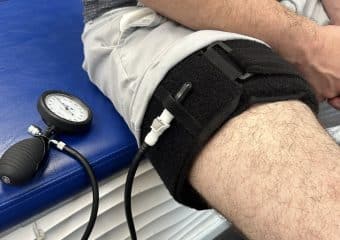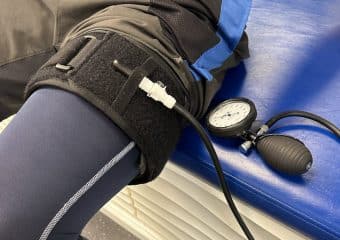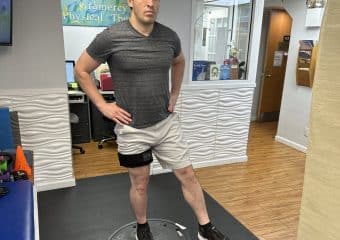
Blood Flow Restriction Therapy (BFRT)
At Gramercy Physical Therapy, located in Manhattan, NY, we believe in staying at the forefront of innovative techniques and therapies such as Blood Restriction Therapy (BRT), also known as Blood Flow Restriction Training (BFRT) can optimize our patients’ rehabilitation and performance outcomes.
What is Blood Restriction Therapy?
Blood Restriction Therapy involves the controlled application of external pressure, typically using a specialized device such as a tourniquet, to limit blood flow to a specific muscle or limb. This technique is rooted in the principle of “occlusion training,” which originated in the 1960s in Japan. Initially used for rehabilitation purposes in patients with limited mobility, BRT has gained recognition in recent years as an effective method for improving muscle strength, hypertrophy, and overall recovery.
How does Blood Restriction Therapy (BRT) Work?
During BRT sessions, a customized and safe pressure is applied to the proximal portion of the limb, effectively occluding venous return while allowing arterial flow to continue. By doing so, the restricted blood flow induces a cascade of physiological responses within the muscle, mimicking the effects of high-intensity resistance training without the need for heavy weights or excessive joint loading. This makes BRT an ideal therapy for patients who may be unable to engage in traditional high-load exercises due to injury, surgical recovery, or physical limitations.
The Benefits of Blood Restriction Therapy?
1. Enhanced Muscle Strength and Hypertrophy: BRT elicits rapid and substantial increases in muscle protein synthesis, leading to enhanced muscle growth and strength gains. This is particularly beneficial for individuals recovering from injuries or surgeries, as BRT can help rebuild muscle mass even when traditional resistance training methods are not feasible.
2. Accelerated Rehabilitation: By promoting targeted muscle activation and neuromuscular adaptations, BRT can accelerate the recovery process. This therapy helps reduce muscle atrophy, minimize joint stress, and enhance the reestablishment of neuromuscular connections, facilitating a faster return to functional activities.
3. Improved Endurance and Cardiovascular Health: BRT has demonstrated promising effects on aerobic capacity and endurance. By engaging smaller muscle fibers that are typically not activated during low-load exercises, BRT can stimulate cardiovascular adaptations, promoting improved endurance levels and overall cardiovascular health.
4. Time Efficiency: BRT offers time-efficient training sessions. With BRT, patients can achieve comparable results to traditional resistance training with significantly lighter loads. This means shorter training sessions, allowing individuals to optimize their time without compromising the quality of their workouts.
With the aid of blood restriction treatment (BRT), you may be able to take the first step toward realizing your body’s full potential and maximizing its capabilities.



